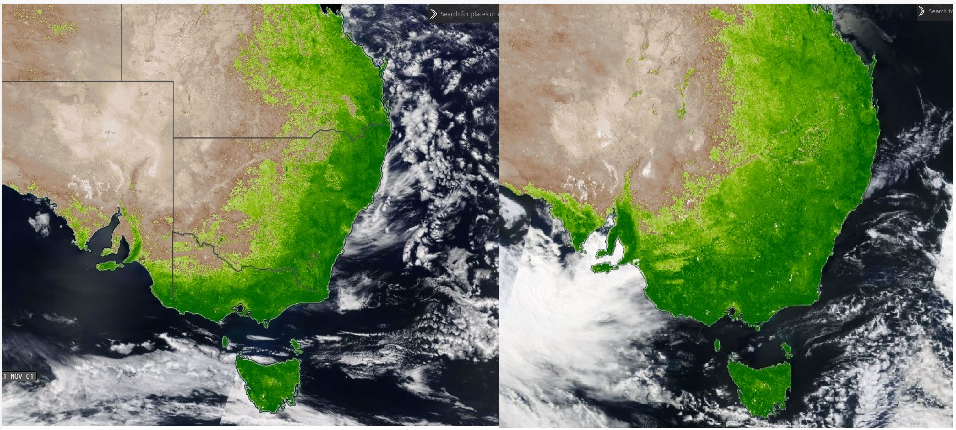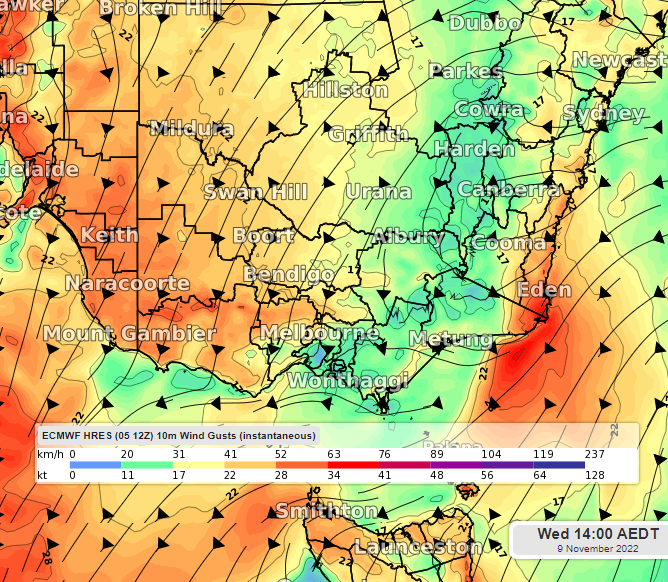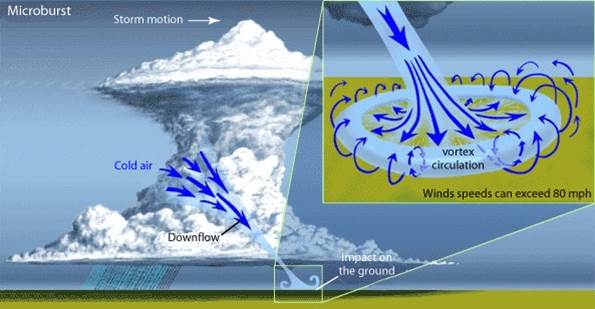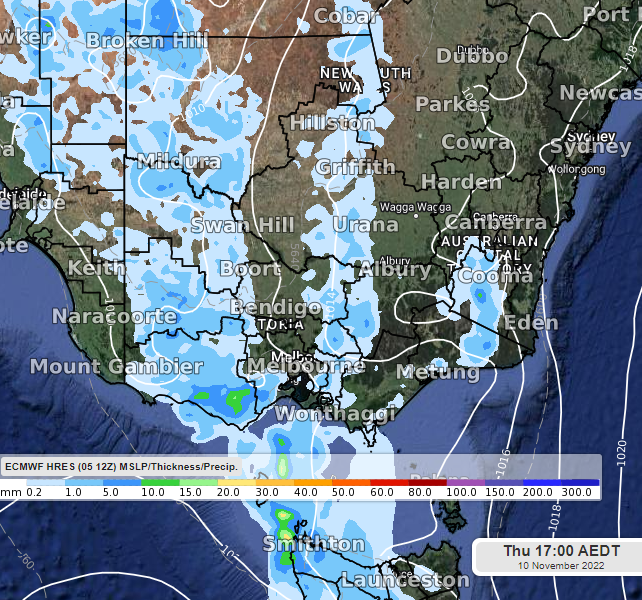Hay fever, asthma, and the weather: peak pollen season arrives in the southeast
According to Melbourne University’s pollen research team most of the worst pollen days of the year for Victoria occur in November and December. So, what weather factors influence the amount of pollen in the air? There are seasonal weather factors as well as daily weather factors that affect the amount of pollen.
On a seasonal scale, it depends on how much grass has grown which depends on the rainfall in the previous months. Satellites can measure the health of vegetation from space. Comparing the October vegetation index this year and last year, we can see from the green shading that there is much more vegetation across inland New South Wales, northwest Victoria, and southern South Australia due to increased rain compared to this time last year.

Image: Comparison of monthly vegetation index Oct 2021 (left) and Oct 2022 (right). Source: NASA https://worldview.earthdata.nasa.gov/
The daily weather influences on pollen are winds, precipitation, temperature, and thunderstorms. For Victoria, the high and extreme pollen counts are often due to strong winds blowing from the northwest or north on a warm, dry day. This is because these winds can lift the pollen from the fields, and it remains suspended in the air. Days with low pollen counts often occur on days with winds from the south or southwest on cool, showery days as this air comes from over the ocean and precipitation brings pollen to the ground. For Sydney, high pollen days usually occur earlier in Spring compared to Melbourne, often occurring with dry, gusty winds blowing from the west as we saw last week.
Although many will welcome the warmth, this week will be particularly bad for sufferers of hay fever and asthma across Victoria and southern NSW due to warm dry days and strengthening northerly winds lifting large amounts of pollen in the air. Wednesday will be the warmest day of the week with strong winds and dry conditions, making it one of the worst days in terms of pollen.

Image: ECMWF forecast 10m wind gusts at 2pm AEDT Wednesday 9th
Thunderstorm asthma
Thunderstorms can also be very dangerous for sufferers of hay fever and asthma due to the very strong winds they can produce. A thunderstorm is a huge cloud produced by a strong current of upward air that is matched by a downward current of air. This downward current of air hits the ground and spreads out horizontally as the following diagram shows. In severe storms, these winds exceed 90km/h and can knock down trees and damage structures. The Bureau of Meteorology issues severe thunderstorm warnings for damaging winds when this occurs.

Image: Thunderstorm causing strong winds at the surface. Source: US National Weather Service.
It is very important to be aware of thunderstorms forecasts and severe thunderstorm warnings because strong winds from storms can lift very large amounts of pollen and can trigger asthma attacks and strong bouts of hay fever. On 21 November 2016, with plenty of grass in the fields, severe storms developed over western Victoria and produced damaging winds that brought large amounts of pollen towards Melbourne. Sadly, the pollen was so high that it caused thousands of cases of asthma attacks with 10 people losing their lives.
Thunderstorms will be a risk over western Victoria and southwest New South Wales on Thursday, and over the weekend, so please stay up to date with forecasts and warnings issued if any storms become severe.

Image: ECMWF model forecast 3-hourly precipitation and pressure chart at 5pm AEDT on Thursday
From around Tuesday next week winds will turn southwesterly, cooling temperatures and easing the risk of hay fever and thunderstorm asthma for a period.
You can find out more about pollen forecasts at https://www.pollenforecast.com.au/ and https://www.melbournepollen.com.au/ (also includes thunderstorm asthma forecast for Victoria).